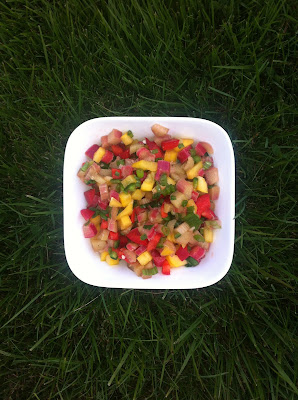
Oh ginger, how I love thee!
Ginger is one of my favourite ingredients. Not only do I love the refreshing bite that ginger gives, it has many health benefits. The medicinal use of ginger in Asian and Indian cultures dates back to 4th Century BC, and is still used to this day in traditional medicine. It has been used for thousands of years to treat nausea, upset stomach, and digestive problems. Today, studies are finding numerous benefits of ginger, such as its effective use as an anti-inflammatory. For example, ginger has been found to help decrease the pain and symptoms of arthritis and other joint problems. Ginger has also been found to help prevent and fight illness and disease, such as colds, flus, and cancer. Some other beneficial uses of ginger are to treat morning sickness, heartburn relief, migraine and headache relief, respiratory problems, and to aid circulation.
Because ginger has numerous health benefits, it should be an ingredient incorporated into your diet as often as possible . One easy and delicious way of using ginger is in your juices. The juice recipe I am positing today is a great immune booster, detoxifier and digestive aid. This recipe makes a single serving of juice (approximately 8 ounces) and is best had in the morning 20 minutes before breakfast because ginger and lemon stimulates bile secretion and digestive fluids, promoting quicker digestion of foods.
Carrot Ginger Juice
- 2 carrots
- 1 apple
- 1/2 lemon
- 1 inch cube of ginger
If you would like a milder taste, the ginger skin can be scraped off with a teaspoon. The lemon can also be peeled to avoid bitterness.
What do the Ingredients Provide?
Ginger is known to have more than twelve types of antioxidants and contains potassium, magnesium, phosphorous, protein, calcium, zinc, iron, and Vitamins A, C, E, B3. Ginger also has manganese in it which builds resistance to disease, protects the lining of the heart, blood vessels, and urinary passages. Silicon is found in ginger as well, which helps promote healthy, skin, hair, teeth and nails.
Carrot is also high in potassium, magnesium and phosphorous, and is an excellent source of Vitamin A, C, D, E, K, B1 and B6. Potassium is a key mineral in our body, thus high consumption of it keeps the organs in our body in optimal condition. Carrot has been found to be an effective cleanser and helps to regulate blood sugar levels. An important tip is to not peel the carrot before juicing because most nutrients are concentrated just under the skin. To clean it, brush the skin and rinse with water.
This is a very simple and easy juice to make. I love the bite that the ginger and lemon give and find that this recipe is another favourite of mine. Go ahead, try it!
 Rhubarb Salsa
Rhubarb Salsa













